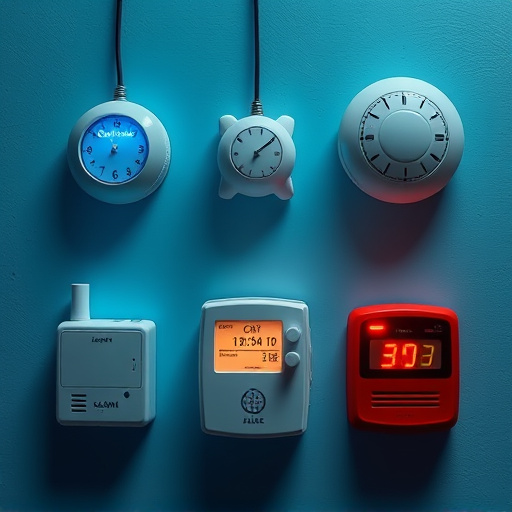In today's digital era, wearable safety alarms designed specifically for joggers offer advanced personal security through GPS tracking, automatic fall detection, and instant location sharing. These devices enhance response times in emergencies, foster a sense of community among runners, and provide peace of mind with durable designs, water resistance, and long-lasting batteries. Optimal use involves managing privacy settings, updating contact lists, and familiarizing oneself with the device's features, while regular testing ensures reliable operation for joggers and outdoor enthusiasts.
Personal safety is paramount, especially during outdoor activities like jogging. This is where wearable personal safety beacons with location-sharing technology step in as a vital tool. With increasing concerns over personal security, understanding and adopting these innovative devices can significantly enhance runner’s safety. This article explores the need for such beacons, delves into their key features and benefits specifically tailored to joggers, and provides best practices for implementing location-sharing technology to ensure optimal protection while running.
- Understanding the Need for Personal Safety Beacons
- Features and Benefits of Wearable Safety Alarms for Joggers
- Implementation and Best Practices for Location-Sharing Technology
Understanding the Need for Personal Safety Beacons
In today’s digital era, where our daily lives often involve outdoor activities like jogging or even solo walks, ensuring personal safety has become a paramount concern. Traditional methods of asking for help or carrying self-defense tools have limitations. This is where Wearable Safety Alarms for Joggers step in as revolutionary game changers. These innovative devices are designed to address the growing need for immediate assistance and location sharing during potentially risky situations.
By integrating advanced technology, such as GPS tracking and automatic fall detection, these beacons provide a safety net for individuals who might find themselves in emergencies while alone. The ability to share one’s location promptly can make all the difference in expediting rescue efforts. For instance, a jogger facing an unexpected accident or a harasser can activate the alarm, sending out their coordinates, thus alerting nearby friends, family, or emergency services.
Features and Benefits of Wearable Safety Alarms for Joggers
Wearable safety alarms specifically designed for joggers offer a range of features that enhance personal security during outdoor runs. These devices typically include GPS tracking, allowing users to share their location in real-time with pre-selected contacts. The alarm functionality provides a powerful deterrent against potential threats, as it can be activated manually or automatically when certain parameters, such as speed or sudden stops, are triggered. Additionally, many models feature durable designs suitable for intense physical activity, water resistance, and long-lasting batteries, ensuring joggers stay protected without compromising comfort or performance.
For joggers, the benefits extend beyond peace of mind. These wearables can improve response times in emergency situations by instantly relaying a user’s location to emergency services or trusted contacts. They also foster a sense of community among runners, as sharing location data encourages accountability and support within running groups. Moreover, some devices offer additional features like fall detection and automatic incident detection, further enhancing the overall safety experience for joggers.
Implementation and Best Practices for Location-Sharing Technology
The implementation of location-sharing technology in wearable safety alarms, like those designed for joggers, offers a powerful tool for enhancing personal safety. This technology allows users to share their real-time locations with trusted contacts or emergency services, enabling swift response times in case of distress. Best practices dictate that individuals should ensure privacy settings are optimized, only sharing their location with specified people, and regularly updating contact lists to maintain accuracy. Users must also familiarize themselves with the device’s user interface to quickly activate location-sharing during emergencies.
Moreover, regular testing of the technology is crucial to ensure reliability. This includes checking signal strength, understanding battery life, and verifying the accuracy of location data. By following these best practices, individuals can maximize the benefits of location-sharing technology, enhancing their personal safety while jogging or engaging in outdoor activities.
Personal safety beacons with location sharing are transforming the way we think about outdoor activities, especially for joggers. By equipping ourselves with these advanced wearable devices, we can enhance our personal security and peace of mind while enjoying the outdoors. As this technology continues to evolve, it’s crucial to follow best practices for implementation to ensure effective use and maximum benefits, such as improved emergency response times and enhanced situational awareness. The Wearable Safety Alarm for Joggers is no longer a niche concern but a valuable tool in our modern lifestyle.
